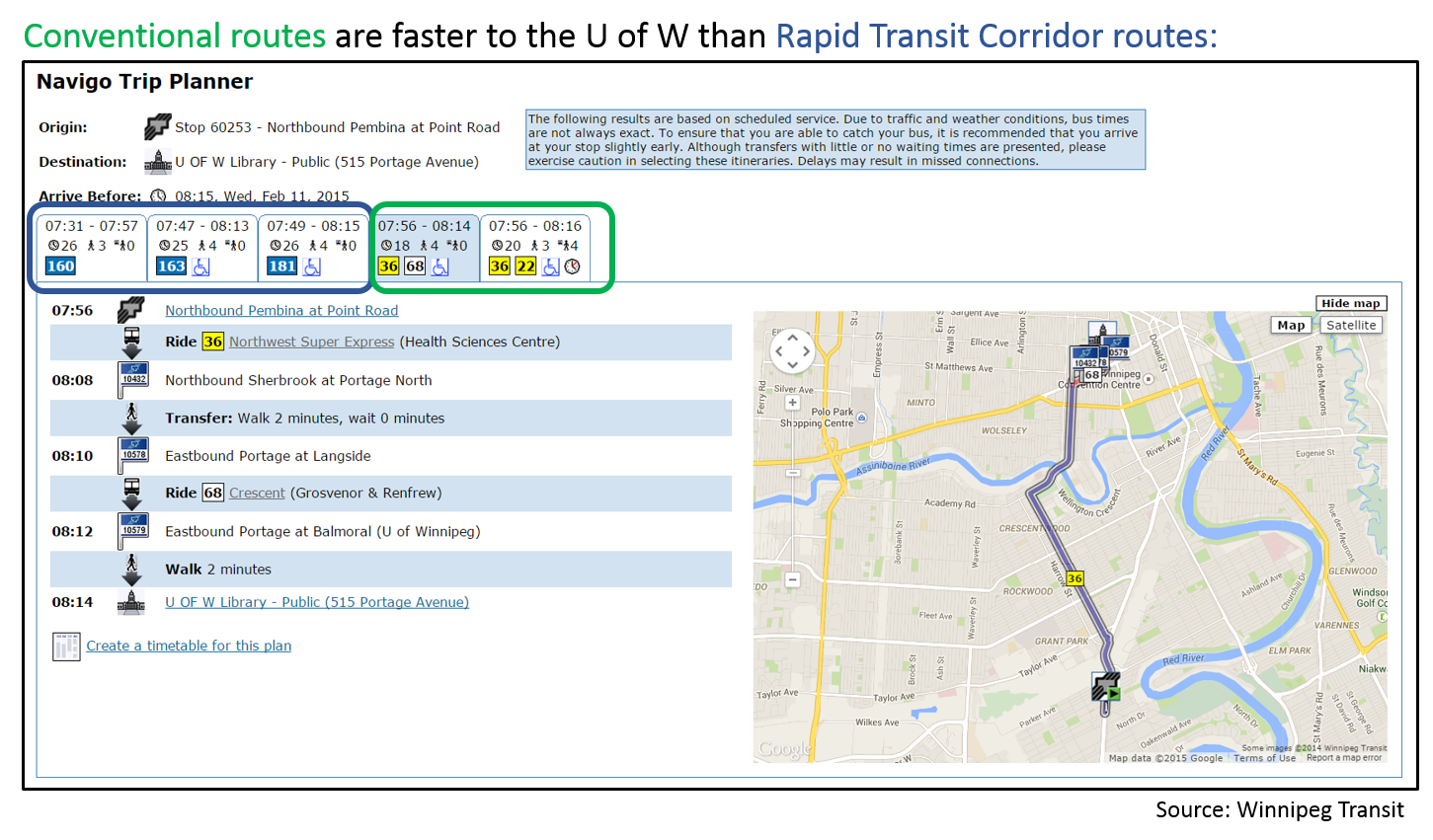On Monday, a press conference was held at the Balmoral Station to announce the federal government had approved funding for the Phase 2 of the Southwest Corridor.
The location for the announcement was an ironic choice. Getting to this station from South Winnipeg during rush hour actually takes longer when using the first phase of the Southwest Corridor compared to two non-rapid transit routes.
A comparison of routes on Navigo finds that the #36 with a transfer to the #68 is faster, and so is the #60 route.
Beginning at Point Road (just south of the Corridor), taking the #36 down Stafford and transferring to the #68 is seven minutes faster to the University of Winnipeg than taking the routes that run along the Corridor. During the afternoon rush hour, this route takes five to six minutes faster.
The #60, the route that the rapid transit Corridor was designed to replace, is usually one or two minutes faster than the Corridor.
In the future, increases in congestion might make the non-rapid transit routes slower than the Corridor routes, but that isn’t certain. The Winnipeg Transportation Master Plan, the City’s main transportation planning document released in 2011, does not predict increases to congestion on these routes (pdf page 109). The streets that the #36 follows (Stafford, Maryland and Sherbrook) are not expected to become major congestion areas by 2031. The #60 faces high congestion in Osborne Village presently, but so do the rapid transit buses on Main Street, where they exit the Southwest Corridor.
While Functional Transit Winnipeg has tended to avoid criticising the corridor for not actually being rapid (because there are enough other reasons why the Corridor is problematic), this case does a good job of illustrating our argument for frequency on our existing system:
Despite it being seven minutes faster to take the #36, most people might still choose to take the Corridor because these buses don’t come frequently.
While the #36 combined with the #68 is faster than taking the Corridor for U of W students, riders might still feel skeptical about taking that option since the transfer is tight and the #68 only comes every 25 minutes. This is exactly why we need bus frequency. When buses come infrequently, the time-penalty for missing the bus is huge — riders will choose not to take the risk and they’ll be stuck with a longer Corridor route to their destination as a result. Increasing the frequency of the #68 would actually make this faster route to the U of W the preferred option.
This example demonstrates how difficult it is to plan for all the different transit needs of riders. While those riders who need to get from South Winnipeg to the corner of Graham and Main will find transit faster via the corridor faster, those travelling to the University of Winnipeg will find it faster to use alternative routes. It is impossible to plan for various segments of the transit-riding population simultaneously by investing heavily in one route. Investing in operating more buses on a conventional network meets the wide diversity of riders’ needs and gets everyone closer to their destinations faster than the Southwest Corridor..

